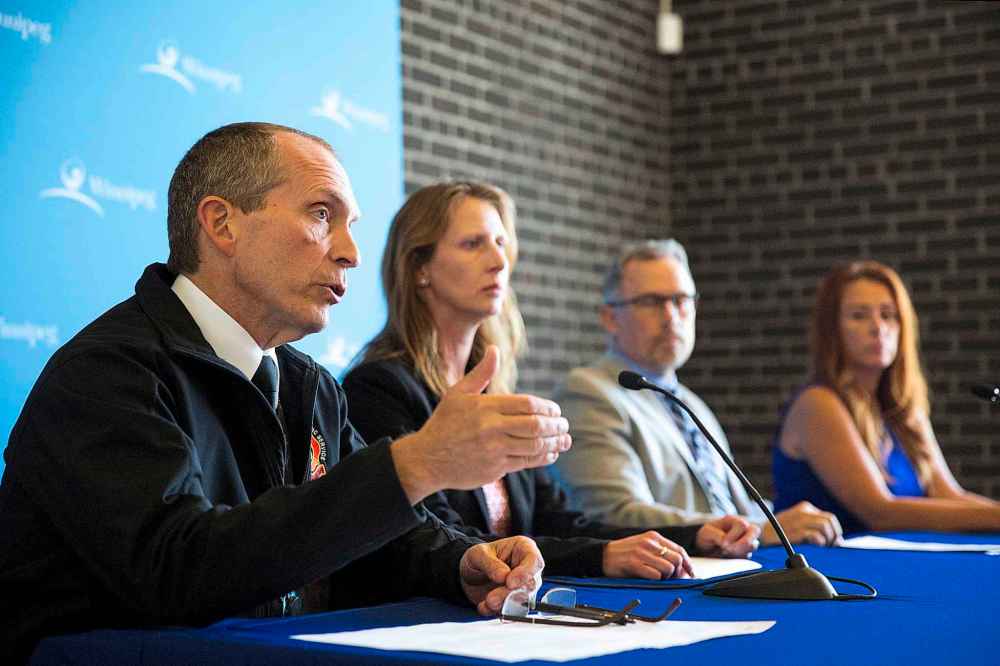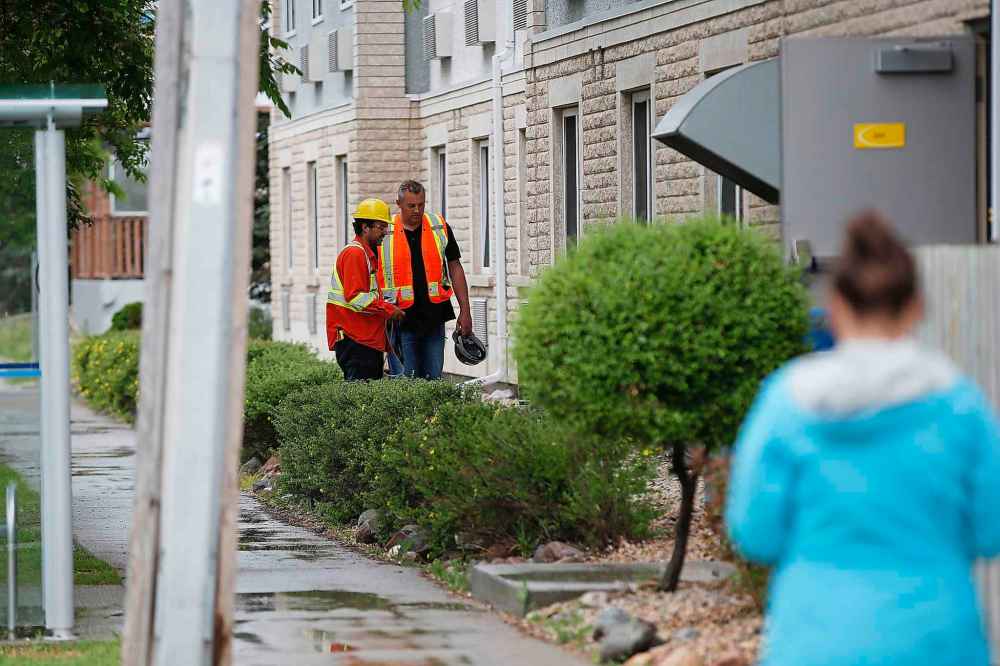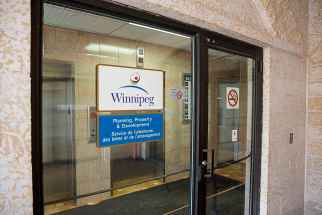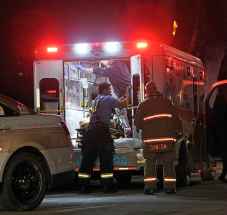Faulty venting cited in Super 8 carbon monoxide crisis
Read this article for free:
or
Already have an account? Log in here »
To continue reading, please subscribe:
Monthly Digital Subscription
$0 for the first 4 weeks*
- Enjoy unlimited reading on winnipegfreepress.com
- Read the E-Edition, our digital replica newspaper
- Access News Break, our award-winning app
- Play interactive puzzles
*No charge for 4 weeks then price increases to the regular rate of $19.00 plus GST every four weeks. Offer available to new and qualified returning subscribers only. Cancel any time.
Monthly Digital Subscription
$4.75/week*
- Enjoy unlimited reading on winnipegfreepress.com
- Read the E-Edition, our digital replica newspaper
- Access News Break, our award-winning app
- Play interactive puzzles
*Billed as $19 plus GST every four weeks. Cancel any time.
To continue reading, please subscribe:
Add Free Press access to your Brandon Sun subscription for only an additional
$1 for the first 4 weeks*
*Your next subscription payment will increase by $1.00 and you will be charged $16.99 plus GST for four weeks. After four weeks, your payment will increase to $23.99 plus GST every four weeks.
Read unlimited articles for free today:
or
Already have an account? Log in here »
Hey there, time traveller!
This article was published 10/07/2019 (2344 days ago), so information in it may no longer be current.
Carbon monoxide buildup that sent more than 40 people to hospital from the Super 8 hotel on west Portage Avenue Tuesday was caused by improper ventilation, officials say.
It’s not yet clear which gas-powered appliance or connection malfunctioned to cause the buildup, which recirculated via the boiler room through the building, officials say. The building’s natural gas remains off to ensure it’s safe for guests, who returned to the hotel Tuesday afternoon.
“Instead of being safely vented, exhaust was being drawn back into the building,” said Manitoba Hydro director of engineering and construction Chuck Steele.

None of those taken to hospital, including the 15 taken in critical condition, needed to be admitted, said WRHA chief health operating officer Krista Williams. They were treated primarily with oxygen, though some had other health needs that needed to be attended to. But none required invasive resuscitation.
“All of them have been discharged,” Williams said Wednesday.
One patient, a 24-year-old housekeeper, was in her second day on the job when the incident happened, her father told the Free Press. He declined to give their names, worried about her job. After being treated with oxygen at the Grace Hospital for five hours, she was released and is now doing OK, he said.
He said the hotel is providing her with lost wages and counselling as she recovers from the traumatic incident.

All 52 people and a dog inside the hotel were evacuated Tuesday morning when carbon monoxide levels up to 385 parts per million were detected.
WFPS Chief John Lane said that level is “very concerning,” but compared it to the 5,000-10,000 parts per million that might be instantly fatal, for example, if a car is left running inside a garage. “You’ve got two or three breaths, and that would be it,” in that case, he said.
Deputy fire commissioner Candace Russell-Summers said Manitoba’s the only jurisdiction in Canada that currently requires carbon monoxide detectors in buildings other than homes. The Manitoba Fire Code and the Manitoba Building Code contain rules focused on areas where people sleep or stay overnight, including hospitals, care homes, schools and hotels..
Straight oxygen not the answer: Doc

Straight oxygen isn’t the best treatment for carbon monoxide poisoning, an Ontario doctor says, and may even be responsible for long-term side effects.
Most of the more than 40 patients treated for carbon monoxide poisoning Tuesday received O2 (oxygen) in ambulances or in Winnipeg hospitals, WRHA chief officer of health Krista Williams said on Wednesday.
She wouldn’t comment on the carbon monoxide blood saturation levels of those taken to hospital, but one man said his was as high as 27 per cent.
Straight oxygen isn’t the best treatment for carbon monoxide poisoning, an Ontario doctor says, and may even be responsible for long-term side effects.
Most of the more than 40 patients treated for carbon monoxide poisoning Tuesday received O2 (oxygen) in ambulances or in Winnipeg hospitals, WRHA chief officer of health Krista Williams said on Wednesday.
She wouldn’t comment on the carbon monoxide blood saturation levels of those taken to hospital, but one man said his was as high as 27 per cent.
Dr. Joe Fisher is hoping to get his carbon monoxide treatment called ClearMate into the hands of medics before another mass incident happens.
“Had they had (the device), many of the patients may not have been as sick as they are,” said Fisher.
The current gold standard for carbon monoxide poisoning is hyperbaric chambers, but they are scarce and can take hours to set up, Fisher said: not ideal in an emergency.
“You want to be able to take it to where the patients are,” Fisher said of his briefcase-sized device.
Patients are often treated with oxygen alone, as they were in Winnipeg Tuesday.
But Fisher warns the long-term side effects associated with carbon monoxide poisoning — including inability to concentrate, reduction in executive function and changes in sleep, appetite and sexual function— could be partly caused by that treatment. He co-authored a paper in the Annals of Emergency Medicine warning that oxygen treatment might actually result in less oxygen being delivered to the brain.
“It’s quite possible some of the damage that one sees after carbon monoxide poisoning, some of the brain damage, may be due, paradoxically, to the treatment that they got,” he said.
By pushing both carbon dioxide and oxygen, ClearMate helps patients breathe more quickly without hyperventilating. It washes the carbon dioxide out of the lungs, he said.
“We don’t tell them to breathe more quickly. It turns out this system makes them feel like breathing more quickly is what they want to do,” he said. “They don’t feel like they’re hyperventilating, they feel like they’re breathing normally. And meanwhile the CO is just flowing out of their blood.”
ClearMate has been approved by Health Canada and just got FDA approval in April, so Fisher is eager to get it into ambulances and hospitals — at US$10,000 each.
tvanderhart@freepress.mb.ca
@tessavanderhart
Russell-Summers said the building was last inspected and found compliant in 2017. It’s due for inspection again in 2020.
The number of carbon monoxide detectors required in a public building depends on the date it was built and renovations, and it’s not clear how many detectors were required or installed at the Super 8, said Russell-Summers. Super 8’s ownership did not provide an answer as to how many were present.
“We are aware that there were CO detectors in the building, but at this time it’s premature to comment about the type or the number of detectors that were found. So at this point it’s very much under review,” she said.
It remains unclear how much time elapsed between the beginning of the emission and the alarm — hardwired to notify an alarm company, which contacted emergency crews — went off.

“Did they (alarms) go off in time? Absolutely, look at the outcome,” Lane said, noting that people were sent home from the hospital without needing to be admitted.
“This alarm absolutely saved lives,” he said.
Last year, the WFPS responded to 708 carbon monoxide calls, but Lane said he’s never seen an incident of this scale during his five years in Winnipeg.
In a short statement, Super 8 West said it would be “fully cooperating” with the ongoing investigation.
tvanderhart@freepress.mb.ca
Twitter: @tessavanderhart














